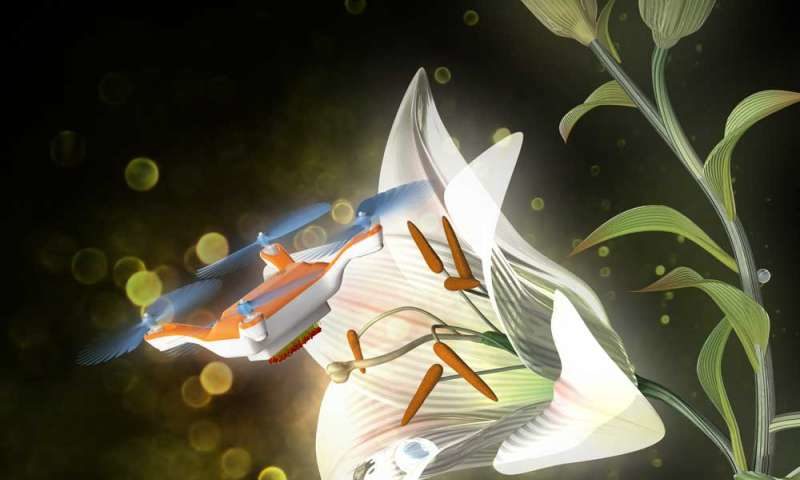A recent announcement coming out of the journal Chem, in an article by Eijiro Miyako, a chemist that the National Institute of Advanced Industrial Science and Technology in Japan, involves the combination of a drone and a gel to create a robot version of the endangered pollinators.
Miyako and his team used a four-propeller drone to which they attached horse hairs in order to mimic the fuzzy body of a bee. They coated the horse hairs with the gel so that pollen would stick to the horse hairs which would then be carried from one plant to another.
Miyako said he doesn't believe that the drones would replace bees but that it could help bees with their pollinating duties. He said that the drones will need to become smarter, more energy efficient and have better maneuverability as well as better GPS and artificial intelligence before they can be realistically used.
While working on a project designed to pick up the slack of a declining bee population is obviously not a bad thing, it would be much more prudent for the U.S. Government to immediately investigate and act on what exactly is causing the population to decline to begin with.
Comment: Bayer and Syngenta knew: Ag giants discovered in secret tests that pesticides severely harmed bees
Of course, this would involve cracking down on Big Ag and toxic pesticides that are overwhelmingly responsible for such a steep decline. Unfortunately, the U.S. Government seems to be moving in the opposite direction with the Trump Administration having halted the addition of the rusty patched bumble bee to the endangered species list.
While it is of course a good idea to prepare for the worst, a world that depends on vulnerable technology to do the work of what once was simply done as an act of nature is a frightening one indeed. Most people would not want to see a world of tiny drones buzzing about fields and gardens instead of bees, but it seems that is the direction in which the world is heading.




How sweet!